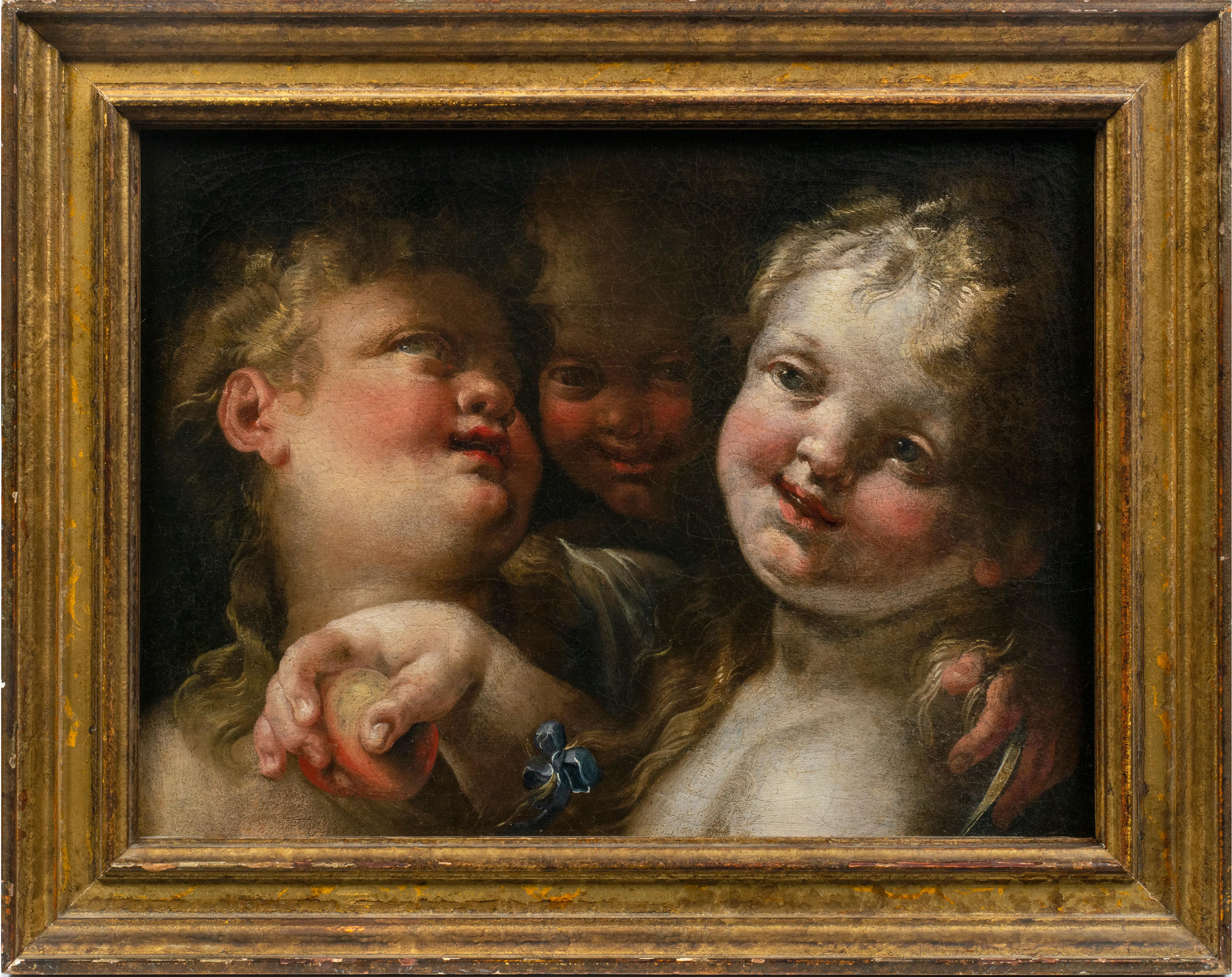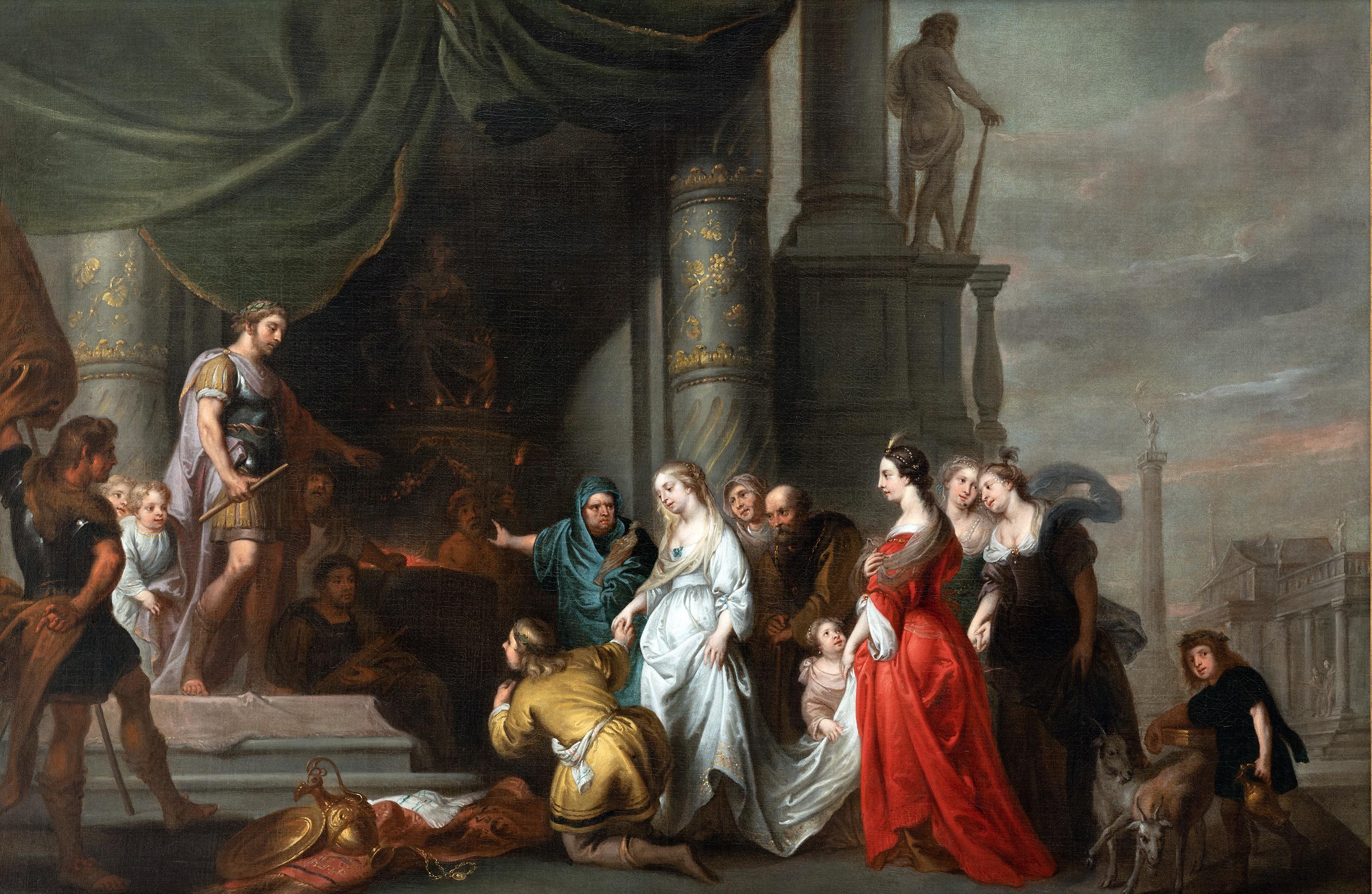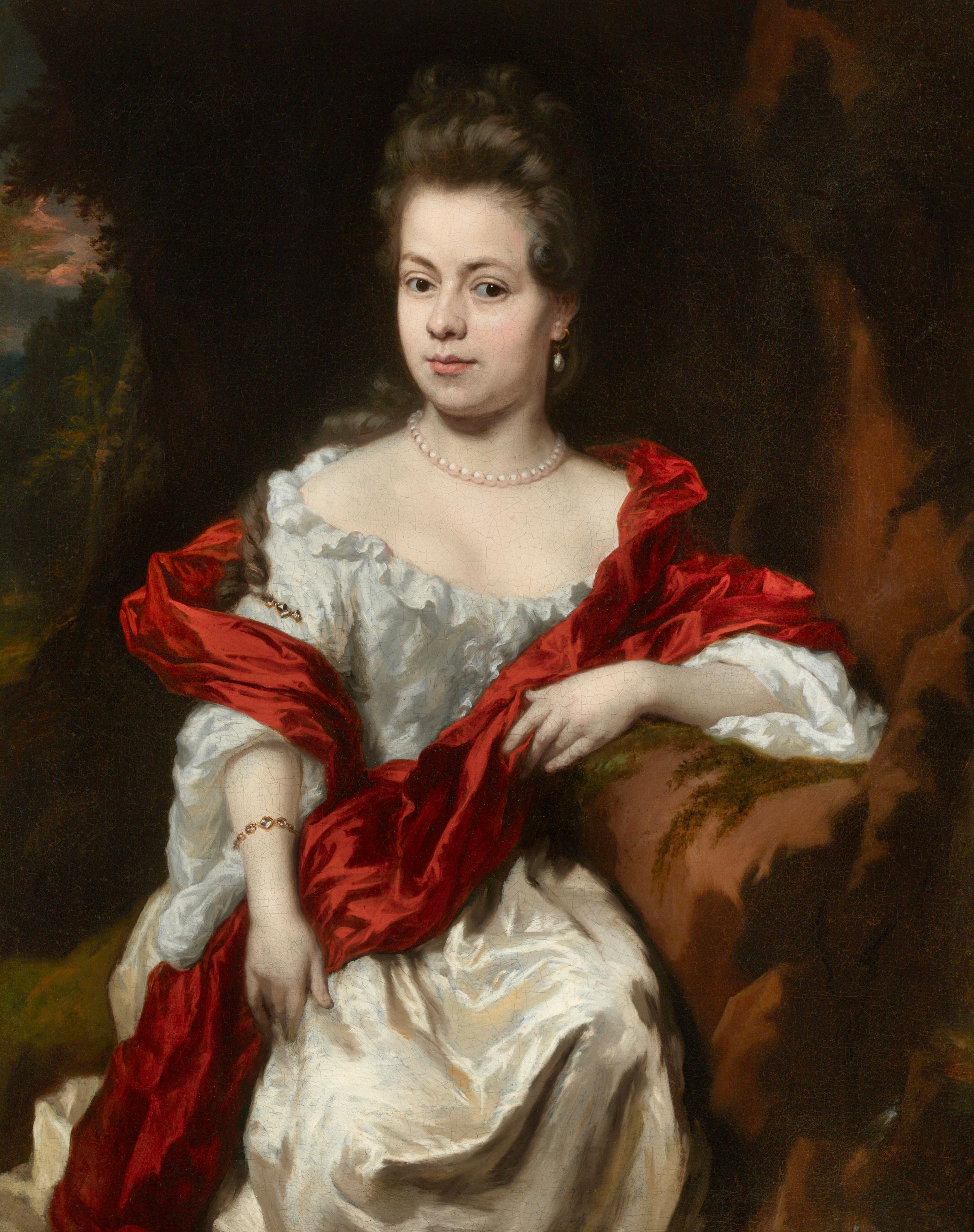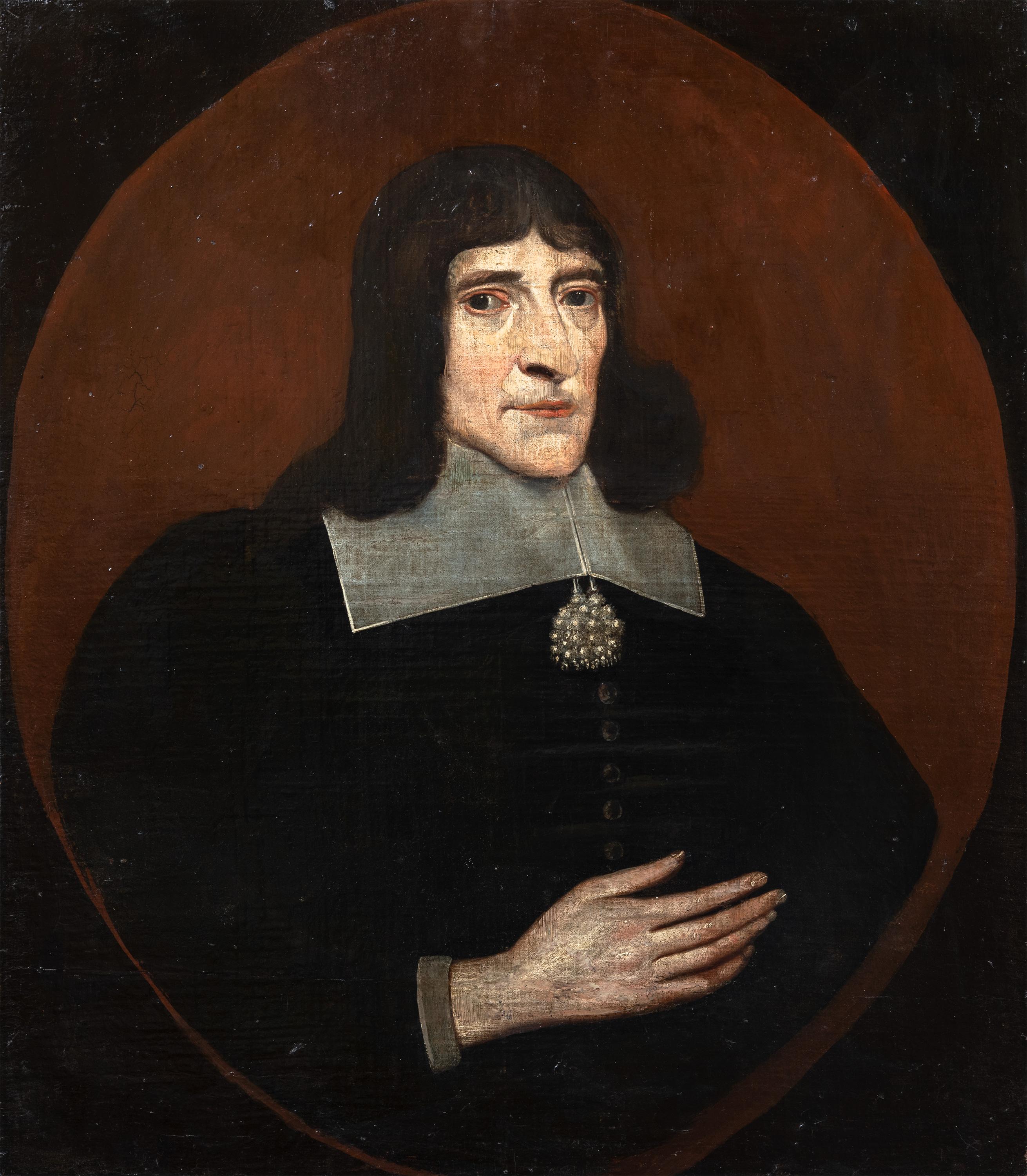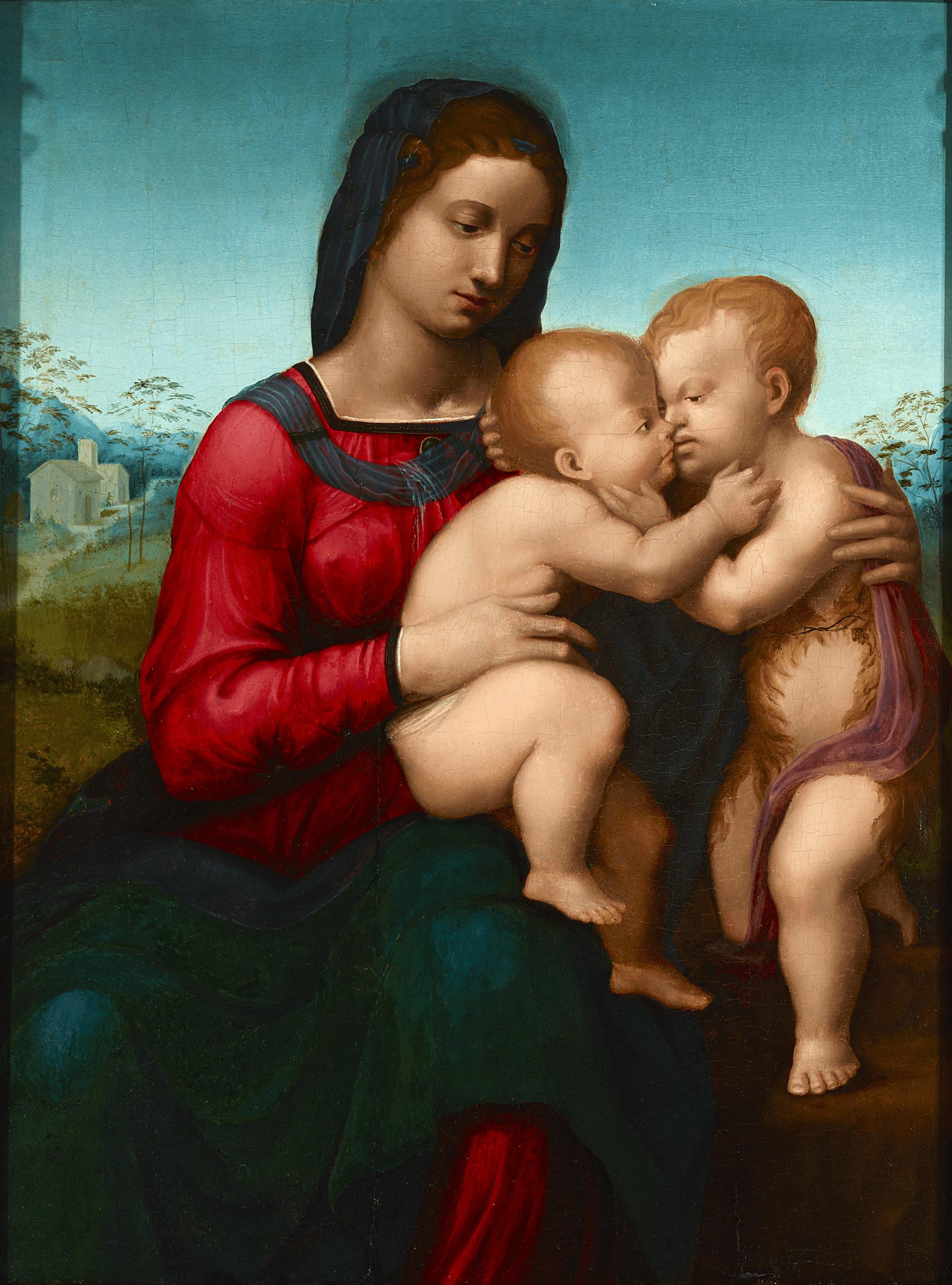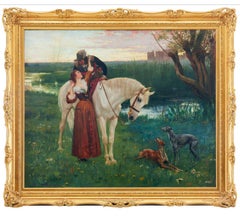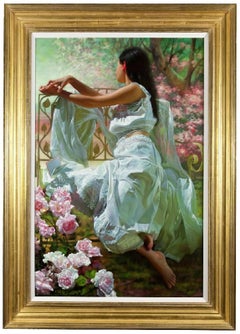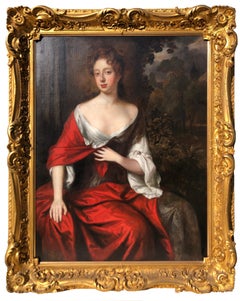
Oil Painting, Portrait of Lady Elizabeth Percy by the studio of Sir Peter Lely
View Similar Items
Want more images or videos?
Request additional images or videos from the seller
1 of 7
Oil Painting, Portrait of Lady Elizabeth Percy by the studio of Sir Peter Lely 1670
1670
About the Item
- Creation Year:1670
- Dimensions:Height: 59 in (149.86 cm)Width: 47 in (119.38 cm)Depth: 6 in (15.24 cm)
- Medium:
- Movement & Style:
- Period:1670-1679
- Condition:Canvas been re-lined with new stretcher. Minor restorations to the figure, some touching in on the edges.
- Gallery Location:Uppingham, GB
- Reference Number:1stDibs: LU122525099302
About the Seller
5.0
Vetted Seller
These experienced sellers undergo a comprehensive evaluation by our team of in-house experts.
Established in 1966
1stDibs seller since 2019
18 sales on 1stDibs
More From This SellerView All
- Oil painting 'The Girl in The Red Dress' by William Frank Calderon (1865-1943)Located in Uppingham, GBOil on Canvas "The girl in the Red Dress" by W Frank Calderon, RA (no58) Exhibit 1911. Calderon was influenced by the "Art Nouveau"period, this painting shows his beautiful detailed...Category
1910s Art Nouveau Portrait Paintings
MaterialsOil
- Portrait of Girl with Flowers by Andrei Belichenko & Maria BoohtiyarovaBy Andre BelichenkoLocated in Uppingham, GBA Wonderful Oil on canvas by Andrei Belichenko & Maria Boohityarova. Two excellent Russian artists who have been exhibiting in France, their works are centred around exquisite detail...Category
2010s Realist Portrait Paintings
MaterialsOil
- Portrait of a Lady, After Sir Peter Lely (1610-1680) Oil PaintingBy After Sir Peter LelyLocated in Uppingham, GBOil Painting After Sir Peter Lely (1610-1680) Portrait of a Lady Housed in a Lely gold Leaf Frame. Peter Lely: In 1647 he became a member of the Pain...Category
17th Century Old Masters Portrait Paintings
MaterialsOil
- Oil Painting Portrait, attributed to John Vanderbank (1694-1739)By John VanderbankLocated in Uppingham, GBOil Painting Portrait of John Campbell, 4th Duke of Argyll,, att to John Vanderbank (1694-1739) Housed in a swept frame which has been restored after photo. Canvas Size 50" x 40", Fr...Category
1690s Old Masters Portrait Paintings
MaterialsCanvas, Oil
- Nude Painting by Andre Belichenko (Russian).By Andre BelichenkoLocated in Uppingham, GBNude with Silks by Andre Belichenko ( Russian) Andrei Belichenko was born in 1974 in Karaganda, Kazakhstan. He is a graduate of the Republican Art Schoo (1990). Andrei studied in t...Category
2010s Realist Nude Paintings
MaterialsAcrylic
- Oil painting by Joseph Farquharson RA (1846-1935)By Joseph FarquharsonLocated in Uppingham, GBOil on canvas by Joseph Farquharson RA (1846-1935) A View of the sun setting over a Scottish Town from a stone bridge. Joseph ...Category
1890s Realist Landscape Paintings
MaterialsOil
You May Also Like
- Portrait of a Bewigged GentlemanBy Vittore GhislandiLocated in New York, NYVittore Ghislandi, called Fra Galgario Provenance: Robert L. and Bertina Suida Manning, New York, ca. 1966-1996 Private Collection, USA Exhibited: “Eighteenth Century European Pai...Category
18th Century Baroque Paintings
MaterialsCopper
- Head of a Classical Poet (Socrates?)By Pier Francesco MolaLocated in New York, NYProvenance: Possibly Antonio Amici Moretti, Rome, 1690 Roy Clyde Gardner, Union, Mississippi, 1970s until 2004; by whom given to: Mississippi Band of Choctaw Indians, 2004-2010 Lit...Category
17th Century Baroque Paintings
MaterialsCanvas, Oil
- Portrait of a Gentleman, Halung, Court Painter Schildbach, Gotha, Convex CopperLocated in Greven, DEChristian Schildbach was a very talented artist with his own style. Art painter in Plauen, then court painter in Dresden; around 1706 art painter in Vienna, also active in Bamberg (...Category
18th Century Baroque Portrait Paintings
MaterialsCopper
- Three AngelsBy Domenico Piola the ElderLocated in New York, NYProvenance: Robert L. and Bertina Suida Manning, New York, until 1996 Private Collection, USA One of the leading artists in Genoa during the second half of the seventeenth century, Domenico Piola came from a successful family of artists, renowned for their many illusionistic ceiling programs throughout Genoese churches and palaces. A prolific draughtsman and painter, Domenico oversaw an extremely productive studio. In addition to his collaborations with numerous other artists, Domenico also provided many designs for book illustrations and prints that circulated throughout Europe, earning him international exposure and high acclaim in his own day. As Dr. Anna Orlando has indicated (written communication), the present work is an early work by Piola, datable from the late 1640s. At this time the young artist came strongly under the influence of Castiglione and Valerio Castello, while admiring the works of Giulio Cesare Procaccini. Piola’s works from this period are exuberant and fluid, and the artist’s love of portraying children is evident from the angels and putti that populate both his altarpieces and more intimate paintings. The present work depicts three angels...Category
17th Century Baroque Figurative Paintings
MaterialsCanvas, Oil
- Continence of Scipio, Erasmus Quellinus, School Rubens, Baroque Art, Old MasterBy Erasmus Quellinus the YoungerLocated in Greven, DEErasmus Quellinus The Continence of Scipio Oil on Canvas The painting is included in the Catalogue Raisonné of the artist. The Roman commande...Category
17th Century Baroque Figurative Paintings
MaterialsOil, Canvas
$27,708 Sale Price20% OffFree Shipping - Portrait of a GentlemanBy Ippolito Scarsella (Scarsellino)Located in New York, NYProvenance: Suida-Manning Collection, New York Private Collection Exhibited: Venetian Paintings of the Sixteenth Century, Finch College Museum of Art, New York, October 30-December 15, 1963, no. 31. Veronese & His Studio in North American Collections, Birmingham Museum of Art, Oct. 1-Nov. 15, 1972, and Montgomery Museum of Fine Arts, Dec. 5-Dec. 31, 1972 Literature: Robert L. Manning, A Loan Exhibition of Venetian Paintings of the Sixteenth Century, exh. cat. New York 1963, cat. no. 31ill., as by Veronese Stephen Clayton and Edward Weeks, eds., introduction by David Rosand, Veronese & His Studio in North American Collections, Birmingham 1972, as by Veronese, p. 38 ill. Terisio Pignatti, Veronese, Venice 1976, I, p. 199, cat. no. A225, II, fig. 908, as attributed to Veronese Terisio Pignatti and Filippo Pedrocco, Veronese; catalogo completo dei dipinti, Florence 1991, no. 54°, as attributed to Veronese. Terisio Pignatti and Filippo Pedrocco, Veronese, Milan 1995, II, pp. 517-518ill., cat. no. A 56, under attributed paintings, by Veronese and workshop) John Garton, Grace and Grandeur; The Portraiture of Paolo Veronese, London-Turnhout 2008, p. 237, fig. 77, cat. no. R16, as workshop of Veronese. Scarsellino’s art is widely regarded as critical link between the Renaissance and the Baroque styles in Emilian painting; not only was he an important transmitter of the heritage of the Renaissance, but he was also open to innovative ideas, and was one of the earliest to experiment with the trend to naturalism that would become fundamental to art of the new century. Born around 1550, he received his earliest training from his father Sigismondo, an architect and painter; it was probably while working at his father’s side as a youth that he acquired the nickname Scarsellino, or “little Scarsella”. After absorbing the principles of his art in Ferrara and Parma, he went to Venice in 1570, staying for four years and working in the shop of Veronese. In the following decade, his art —especially in terms of its piety and its development of landscape— demonstrates a strong sympathy with that of the Carracci, with whom he worked in 1592-1593 at the Palazzo dei Diamanti in Ferrara. Maria Angela Novelli and later Alessandra Frabetti both propose that Scarsellino traveled to Rome, although such a trip has not been documented; if he did travel to Rome, it probably would have occurred during the years that Scarsellino’s colleagues Agostino and Annibale Carracci were there, that is, beginning in 1595 and until 1609. The last decades of Scarsellino’s career again involve stylistic experimentation, this time in a manner that would bring his work very close to the progressive figurative naturalism of Carlo Bononi and prepare the way for Guercino. The present portrait of a distinguished gentleman had been long thought to be by Paolo Veronese and was in fact attributed to him by such distinguished connoisseurs as Adolfo Venturi and Wilhelm Suida. The portrait’s style is, however, distinct from Veronese’s, although clearly indebted to it, and the attribution to the young Scarsellino is wholly convincing. The painting would then date from the 1570s – a date confirmed by the costume the subject wears. The puffed hat that appears in the painting had a rather short-lived vogue in the early 1570s. One sees it in Giambattista Moroni’s Portrait of Count...Category
18th Century and Earlier Baroque Portrait Paintings
MaterialsCanvas, Oil
Recently Viewed
View AllMore Ways To Browse
Sir Peter Lely
Sir Peter Lely Portraits
Studio Of Sir Peter Lely
Duke Of Somerset
Portrait Cardinal
Lady Oil Painting Antique
16th Century Portrait Oil Paintings
Red Haired Woman Portrait
Olive Face
St Augustine Painting
Knight John
Mistress Painting
Victorian Girl Painting
Lady In Hat Painting
Portrait Of A Cardinal
18th Century Portrait Of A Gentleman
17th Century English Portraits
Fashion Lady Painting


